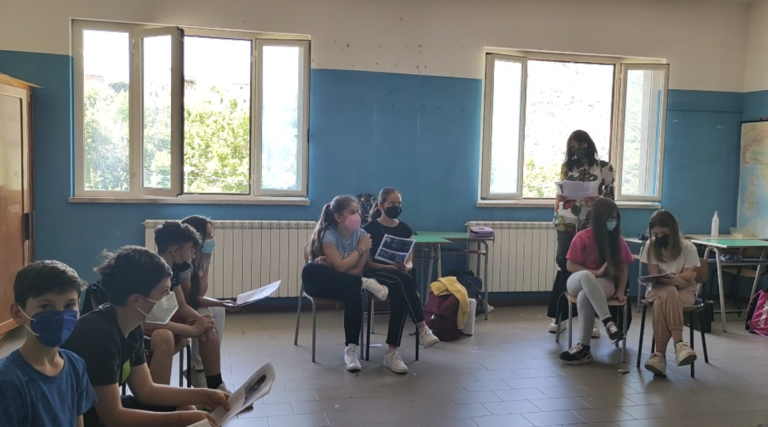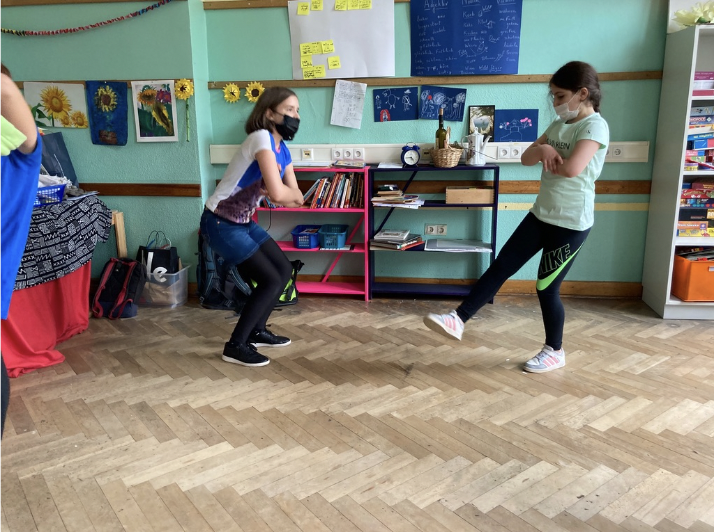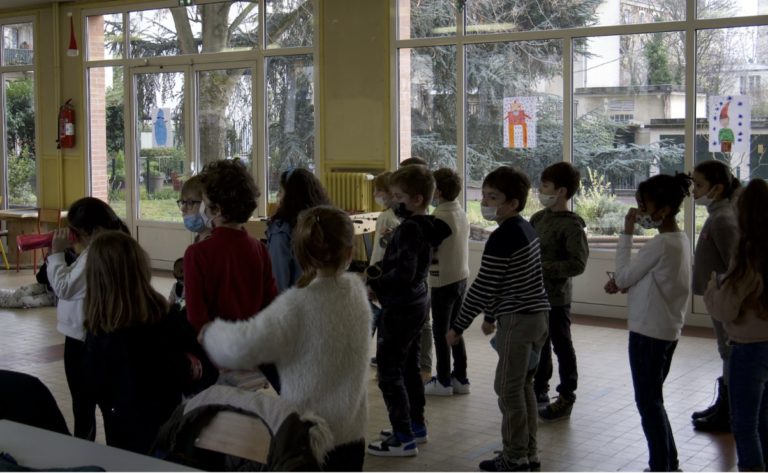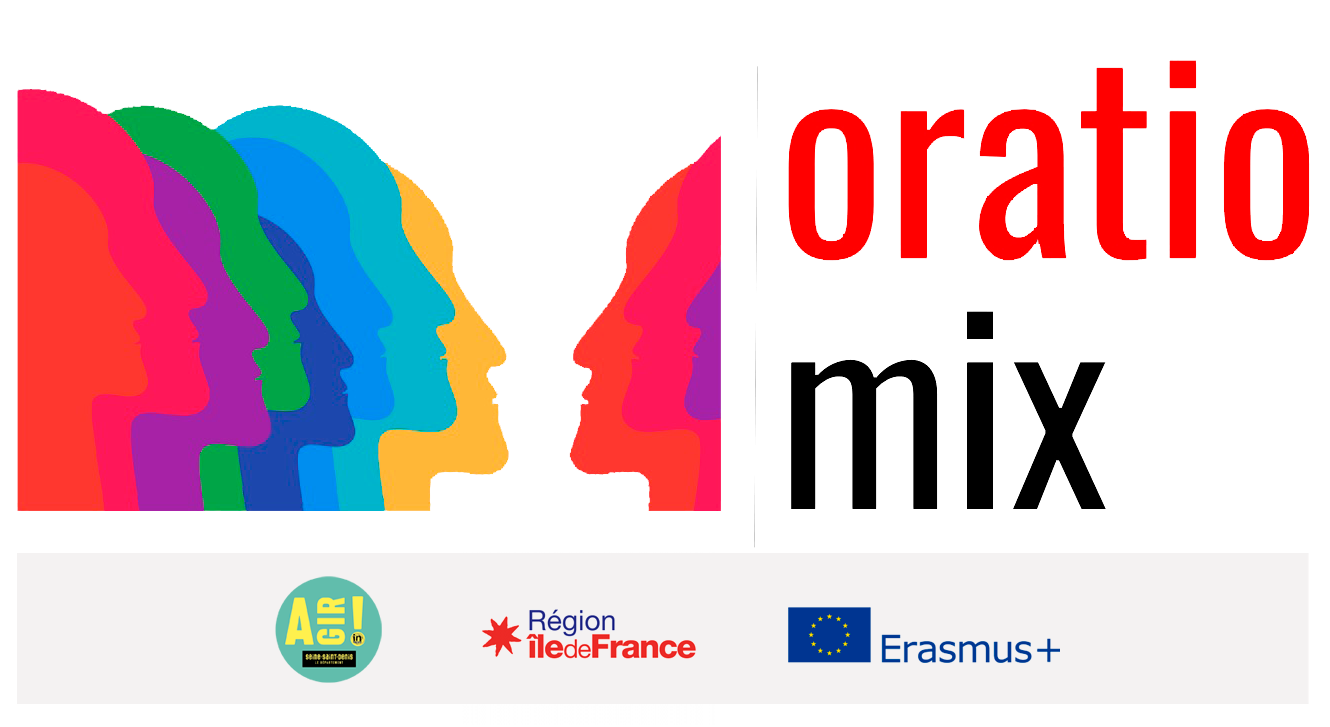Workshop 1 : The Tale
Implementation: what do we need?
– 1 ball
– A workspace: the room provided must be large enough and arranged in such a way that it can accommodate all participants and allow freedom of movement, the workshop requiring physical commitment.
The participants
Primary students between 7 and 10 years, the group not exceeding 30 students
Speaker
School teacher, educator, theatre teacher
Objectives of this workshop
Strengthen team spirit and build trust
Time required
60-90 minutes
We recommend 60 minutes for 7-8 year olds and 90 minutes for 9-10 year olds.
Implementation
Workshops use techniques …
Finality
At the end of the session, children will have:
Developed ability to work individually and in groups
Progressed towards the acquisition of communication skills
Strengthened their critical thinking by sharing and discussing symbolic themes present in their stories.
Students’ use of new expression techniques will improve their personal development and communication skills.
1. Discussion
The workshop rules are first explained:
we listen to each other without making comments and we wait for the speaker to give us the floor, as in class. We can however say if we do not agree with what a comrade just said when asking for the floor.
we try to participate! As for a game, if a player does not play when it is his turn then he may block the game for everyone. To the speaker. However, to use creativity to bypass the reluctance of the timid and find a way to involve them without rushing them! We will offer you alternatives throughout the sessions.
we make constructive criticisms! We can say that we do not like to realize a comrade or that we do not agree with him provided we explain why and propose a solution that would allow the comrade to improve.
we also express what we love! It is important to know how to tell others what we enjoyed or when we share their opinion. This exercise is not always easy for students too. e can be vigilant. e on this point and stimulate them in this direction.

The speaker then initiates the discussion on the performing arts and the world of storytelling. It feeds it by asking students:
What is theatre? Where do we make it? Where can we see it? What do we call those who watch the show? What do we call those on stage? What is the difference between the, the actor and the, the character?
What is a tale? Where do we find them? What is the difference with movies and cartoons? What is one. Hero.in (not to be confused with a superhero)? What tales do you know? Who can be a. hero.in in tales? What other characters do we have? Who can be the bad guys? Who can be the secondary characters? Where do the stories in the tales take place?
He/she should bounce back on student responses and ask frequently if everyone agrees with what was mentioned, or if anyone. I have something to add.
We recommend that you illustrate your participatory presentation with illustrations and photographs that will allow students who have never been to a theatre to picture the concepts you are addressing. You can show photos of different theater rooms (contemporary or Italian) and the layout of a marquee. You can also stream clips from the show on video.
2. Icebreaking
Warm-up exercises – Games to strengthen team spirit and create a climate of trust
These games are an innovative way to start group activities by giving students an opportunity to connect and focus.
First name ball: In a circle, students pass the ball by calling the first name of the person to whom they want to send it first. Each student must receive the ball once in order to go around the class.
Conductor: a. e student leaves the class, the remaining children designate a. e conductor.fe of orchestra. In a circle, students follow the movements of the conductor. The one who had left. He comes back and has to find out who the conductor is.
Mirror game: In pairs, face to face, one. e student leads then the other. Care must be taken to ensure that the actions of the guide are slow and simple.
Walk in space: students are invited to walk in space. Ask them to walk alone, without following a comrade, and always try to move towards a free space. Also make sure that i.el.s does not end up walking in a circle (which is almost always the case, even for adults!) Then i.el.s will have to listen to your instructions while continuing their walk.

- Tempo: start by varying the tempo. Show the example of the 5 speeds you will state. The normal walking, the walking of the turtle (in slow motion), the walking of the snail (the movement is barely perceptible), the walking of the cheetah (we walk very fast) and finally the walking of the spaceship (the fastest walk possible without running). Ask students to be careful not to touch each other while travelling! This is to avoid accidents. Then vary the sequence of steps from turtle to spaceship, snail to normal walking, and so on…
- walk/stop/youpla: students must then try to answer the instruction as much as possible together. Thus, when the facilitator announces “Stop”, all students must stop at the same time. Then, they only resume their walk when the facilitator starts “Walk”. Similarly, when the students hear “Youpla”, they jump on the spot and immediately resume their walk. The facilitator then follows the instructions as he sees fit for a few minutes until the students are comfortable with the exercise.
- the number: when the facilitator states a number, then students must form small groups with as many people as the number announced. For example, we announce the number 4, and students should get into it as quickly as possible. You can also use small numbers if you have a large group. Thus, if you want students to form only two groups you can announce “12” if your group is composed of 24 students. Similarly, you can announce the exact number of students present and see how long it takes them to realize that it takes the entire class to form this group.
- In a circle, students are in a neutral position (arms along the body, feet anchored to the ground). In turn, they put themselves back to the circle, then turn around by playing elements characterizing one. e character or a characteristic element of tales: ogre, witch, dragon, wolf, princess, knight, but also magic lamp, cauldron, flying broom…

3. End Ritual
Clapping
We propose to introduce a small ritual of end of session with the students. This allows you to end the session in a friendly way and create a landmark for students.
We then propose a clapping, like celebrations between athletes and supporters at the end of football matches. The facilitator leads this first clapping. During the next sessions, students will take turns as a leader.
The. a leader stands opposite the other members of the group in order to be seen by all. He/she positions his arms horizontally and will clap his hands above his head. The others must imitate him at his/her pace. Then, little by little, he.elle will accelerate until reaching applause.
